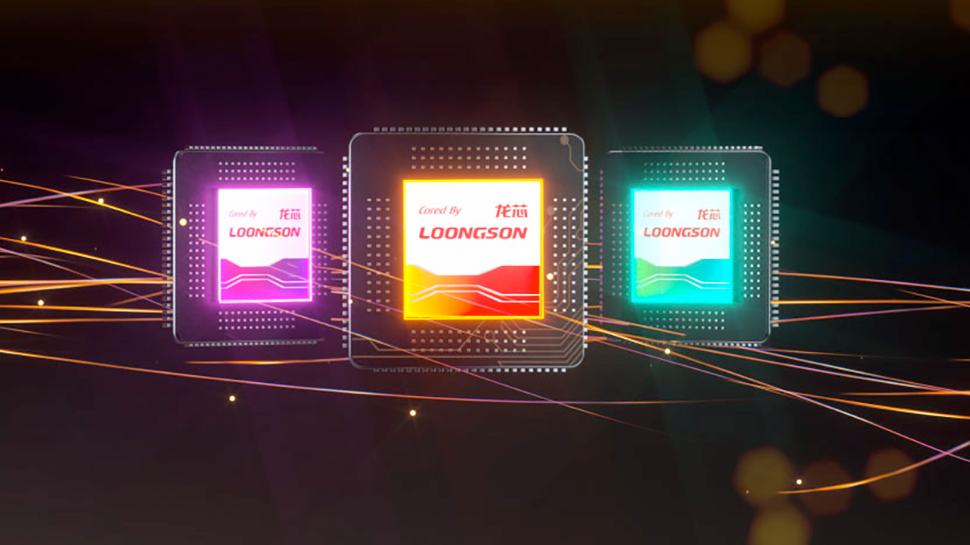
Chinese telecom companies are gradually switching to domestic CPU platforms by raising their procurement of servers based on CPUs from Huawei, Hygon, or Loongson, reports state-controlled Global Times. Purchases by telco giants like China Telecom, China Mobile, and China Unicom significantly support developers of Chinese-made processors and the country's strive for self-sufficiency. But there is a big catch.
Everyone wants a 'G-series' server with a Chinese CPU inside
China Telecom plans to acquire 156,000 servers, 67.5% of which are 'G-series' and equipped with Chinese-made CPUs. This is a substantial shift from four years ago when only 19.9% of the company's servers used domestic CPUs, and Intel Xeon processors dominated with a 79.4% share, according to Global Times.
The 'G-series' is a designation for a server based on a CPU (or maybe even two) formally developed in China.
China Mobile is also ramping up its support for local processors. Of their 13 server procurement tenders, ten are designated for 'G-series' projects, highlighting the company's commitment to domestic CPUs. The report says the proportion of Chinese CPUs in China Mobile's PC server acquisitions has increased from about 21% in 2020 to 43.5% recently.
China Unicon has seen a similar trend, with a notable rise in demand for domestic processors since 2020. The company has increasingly used Chinese-made CPUs, particularly models like Huawei's Kunpeng 920 and Sugon's Hygon 7165 and Hygon 7185.
Because the U.S. government has set rather strict export rules for selling high-performance processors to Chinese entities (which for now have little to do with telco giants, except, of course, blocked Huawei, but even in this case, there have been exceptions made), Chinese telecom companies are switching to domestic processors to ensure that they are not left without compute performance they need if the U.S. imposes stricter sanctions against China.
In addition, the telco giants are also seemingly trying to make their infrastructure indifferent to the instruction set architecture (ISA) of the CPUs that power it. Global Times notes that China Telecom's latest round of procurements included the selection of various processors, including x86 CPUs and 'domestic CPU architectures such as Arm, C86, LoongArch, Yongfeng, and SW.'
But there's a catch
This is where the big catch comes in for China's advancements in client and datacenter-grade CPUs:
- Huawei's Kunpeng CPUs are based on a customized Arm ISA (similar to Apple's industry-leading CPU cores). Although Arm China is the source of the Arm ISA, it was developed in the U.S. and the U.K.
- Sugon's C86 is AMD's x86 Zen with encryption-related enhancements made for China chiplets for Hygon processors in the U.S. by GlobalFoundries (even despite being added to the Entity List).
- Although Loongson has developed a not-invented-here (NIH) attitude and claims its LoongArch is an all-new ISA, it is primarily based on the MIPS ISA.
- Zhaoxin's Yongfeng is an x86 microarchitecture (perhaps even developed in the U.S. by a Via Technologies subsidiary).
- Sunway's SW (Shenwei) ISA can probably be primarily considered a Chinese IP by now, but it derives from DEC's Alpha, which was demised in the 1990s.
Performance improvements, but foreign processors still dominate. But while it is impossible to say that CPUs supplied by Chinese companies all rely on technologies designed domestically, we cannot neglect that their performance has been increasing steadily over the years due to engineering breakthroughs and manufacturing capabilities.
"Chinese-made CPU chips have seen big improvements in the performance and cost-effectiveness, which meet the need of telecom operators," Chen Jing, a vice president of the Technology and Strategy Research Institute, told the Global Times on Thursday.
SMIC's 2nd Generation 7nm process technology, for example, played a huge role in Huawei's ability to regain the performance crown in China's smartphone space.
Despite the apparent shift towards local CPUs, foreign companies such as AMD, Intel, and Nvidia can continue to compete for procurement contracts, provided their processors meet the U.S. export regulations. They do as Nvidia is poised to earn $12 billion selling its cut-down H100 processors under the HGX H20 moniker.
A broader economic context: give us money and technology
At a press conference covering a broader economic context, Chinese Vice Premier He Lifeng emphasized the importance of attracting and using foreign investment while allowing foreign technologies to enter the Chinese market. He also called for relaxing market access to high-tech restrictions to facilitate the entry of foreign capital into the Chinese market.
When it comes to the U.S. government, which is the entity that makes restrictions for China, it reasons its decisions on national security concerns as China could weaponize technologies by building weapons of mass destruction. Even without advanced technologies, China supports Russia's war against Ukraine, a country where it once wanted to get aerospace technologies.







